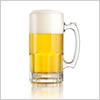Your cart

 South Korea: Japanese beer imports enjoying sharp recovery
South Korea: Japanese beer imports enjoying sharp recovery
As the imported beer market is contracting, only Japanese beer continues to show growth. Since the 'No Japan' (boycott of Japanese products) movement quieted down in 2019, consumer perceptions have changed, and Japanese beers have gained popularity through travel and social media, leading to evaluations that they are regaining their former prominence domestically, ChosunBiz reported on May 1.
Analysis of import and export trade data by ChosunBiz revealed that the import value of Japanese beer collapsed after reaching $73.8 million (184.9 billion won) in 2018, but is showing a sharp recovery. Due to the effects of the No Japan movement, the import value dropped to $39.76 million (56.5 billion won) in 2019 and $5.67 million (8.1 billion won) in 2020. It rebounded to $6.88 million (9.8 billion won) in 2021, followed by $14.48 million (20.6 billion won) in 2022, $55.52 million (78.9 billion won) in 2023, and is projected to reach $67.45 million (95.9 billion won) in 2024, marking an increase in import value for four consecutive years.
Japan reclaimed its position as the top beer exporter to Korea in 2023, five years after losing it. It maintained this position last year as well. Last year, the import value of beer ranked Japanese beer first, followed by the Netherlands ($28.23 million), the United States ($22.89 million), and China ($18.11 million). The import value of Japanese beer is more than twice that of the Netherlands, which is in second place.
In contrast, the import value of beer to Korea has shown a gradual decrease from 2021 to 2024. It fell from $223.1 million (317.1 billion won) in 2021 to $195.1 million (277.2 billion won) in 2022. Although it temporarily rebounded to $218.22 million (310.1 billion won) in 2023, it is expected to decrease again to $20.57 million (29.17 billion won) in 2024.
The key factor driving the rebound of Japanese beer is the 'Asahi Super Dry Draft Beer Can' released in 2023. Unlike regular beer cans, the entire lid opens like a tuna can, giving the visual appearance of drinking draft beer, which made it popular among consumers. Initially, there was a shortage when it was released in Japan in 2021, and in Korea, there was a scarcity in large supermarkets and convenience stores in 2023. The effect of its spread on social media was also significant.
The performance of related distribution companies is also showing remarkable recovery. Lotte Asahi Beverage, which imports Asahi beer, recorded sales of 160.9 billion won last year, a 16% increase compared to the previous year. However, operating profit decreased by 12.8% to 36.6 billion won. Profitability was affected by rising administrative and selling expenses, costs of goods sold, and logistics expenses. MZ Beverages, a subsidiary of Maeil Dairies, which distributes brands such as Sapporo and Ebisu, saw sales of 39.2 billion won and operating profit of 3 billion won, representing increases of 63.5% and 67.5%, respectively.
Japanese beers, such as Asahi, Sapporo, and Kirin, have consistently been popular for their clean and smooth lager profiles. After the sentiment of the No Japan movement weakened, consumer demand for Japanese beer grew as travel to Japan resumed and people sought the taste they experienced there. Japan is geographically close, and its logistics network is stable. The transport distance from Hakata Port to Busan is just over 200 kilometers, which is only about half the distance between Tokyo and Osaka. This provides favorable conditions for maintaining freshness.
However, rising prices are a hurdle. Japanese beer's benefit was that it used to be priced similarly to domestic beers. However, the price increases have been significant recently. Lotte Asahi Beverage raised the prices of Asahi products by up to 20% starting from last March. Asahi Super Dry bottles (640 ml) have increased to 5,400 won, and cans (350 ml) have risen to 4,000 won. The domestic beer CAS Corporation's cans (355 ml) have also gone up to 2,500 won; however, there is still a price difference of 1,000 to 2,000 won compared to Japanese beers.
An industry insider noted, "The fully opening lid of the Asahi draft beer can has added a fun element to the drinking experience, making it difficult for imported beers to be selected if they do not differentiate themselves in terms of taste and price. While Japanese beer may not be the choice for value for money, it certainly has a solid fan base, ensuring a certain level of demand will be maintained."
Regresar





